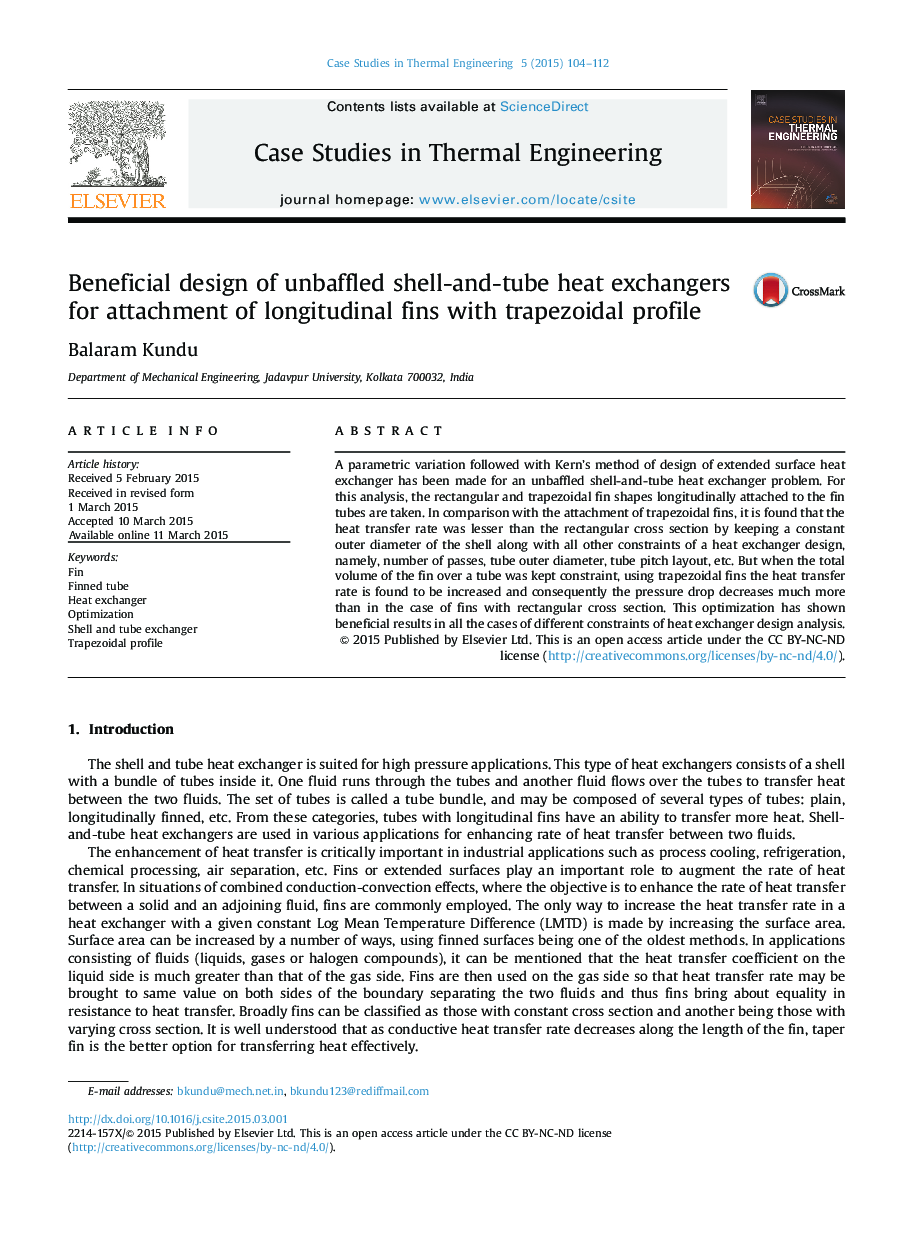| Article ID | Journal | Published Year | Pages | File Type |
|---|---|---|---|---|
| 765392 | Case Studies in Thermal Engineering | 2015 | 9 Pages |
A parametric variation followed with Kern’s method of design of extended surface heat exchanger has been made for an unbaffled shell-and-tube heat exchanger problem. For this analysis, the rectangular and trapezoidal fin shapes longitudinally attached to the fin tubes are taken. In comparison with the attachment of trapezoidal fins, it is found that the heat transfer rate was lesser than the rectangular cross section by keeping a constant outer diameter of the shell along with all other constraints of a heat exchanger design, namely, number of passes, tube outer diameter, tube pitch layout, etc. But when the total volume of the fin over a tube was kept constraint, using trapezoidal fins the heat transfer rate is found to be increased and consequently the pressure drop decreases much more than in the case of fins with rectangular cross section. This optimization has shown beneficial results in all the cases of different constraints of heat exchanger design analysis.
